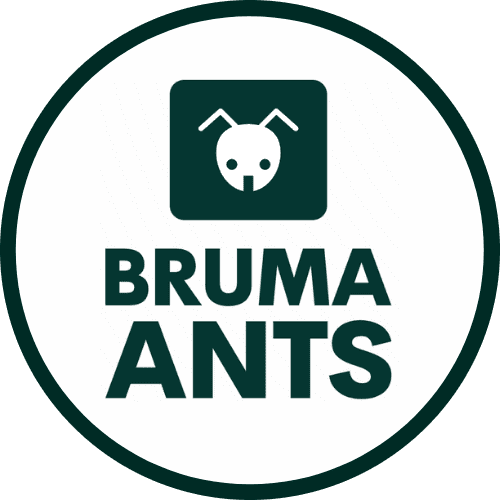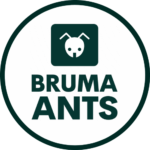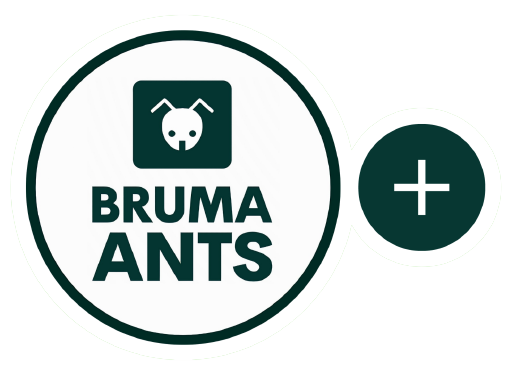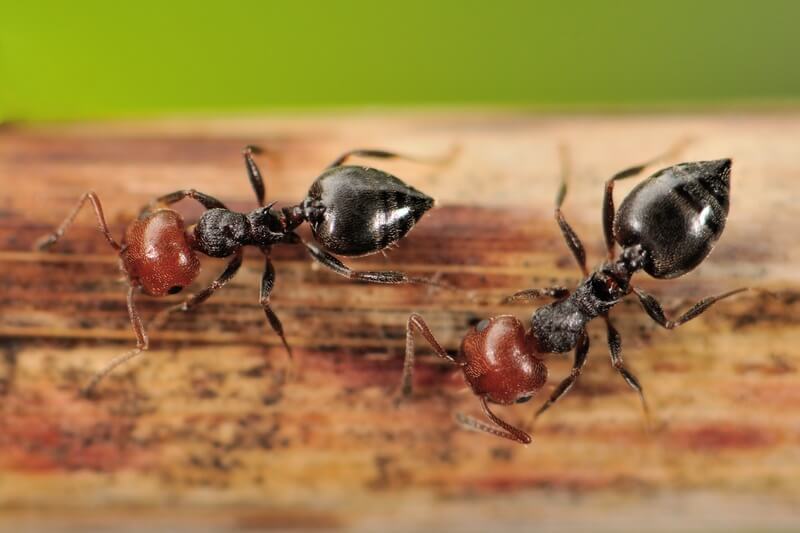Hi guys! I hope you’re doing well!
Today we are going to learn how to care for a really cool ant species: Crematogaster scutellaris. By the end of the guide, you will have all the information you need to start growing your own Crematogaster scutellaris colony all by yourself!
Let’s get into it!
Download
Introduction
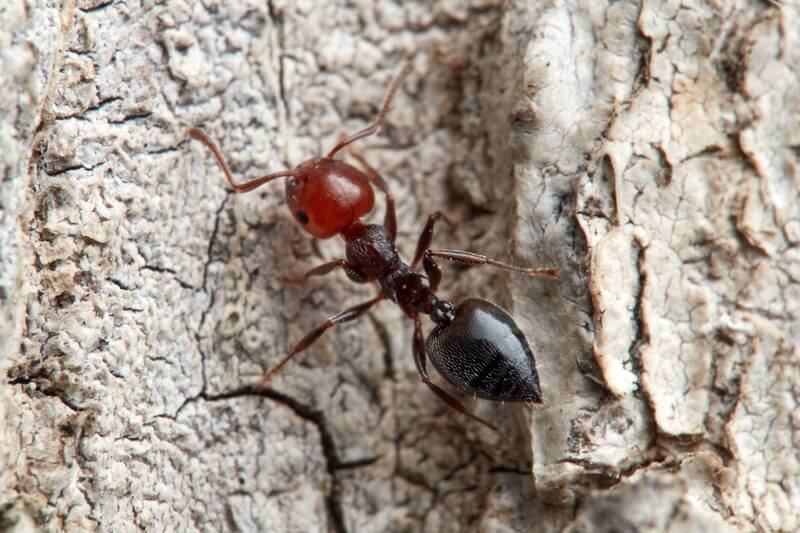
This beautiful species is native to the land surrounding the Mediterranean. They can be found in several countries, such as Southern France, Italy, and Spain.
Crematogaster scutellaris, and in general all Crematogaster species, are also called acrobat ants. They get their name from their habit of acrobatically raising their abdomen above their head, especially when they are disturbed.
The queen size ranges from 7 to 9 mm, and from 3 to 4 mm for the workers. This species is extremely easy to recognize! They have the characteristic heart-shaped abdomen of the Crematogaster species, a black body and a red head.
You can easily find them in dead trees, as they love nesting in wood.
Crematogaster scutellaris is monogyne, which means that the colonies of this species accept only one queen.
The nuptial flights of this species usually occur in late summer and in the fall; between August and October, when the temperature begins to decrease.
Distribution
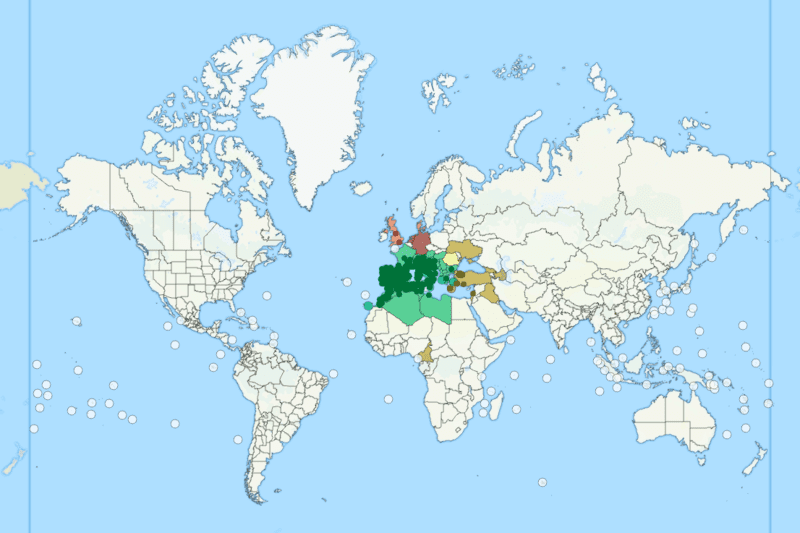

Native
Exotic
Dubious
Indoor introduced
Needs verification
No Records
Maps by AntMaps.org
Temperature
21°C
25°C
Crematogaster scutellaris, like many other Mediterranean species, are very adaptable to temperature changes. They do not have very strict temperature requirements, and they can easily be kept at room temperature.
However, the ideal temperature for this species is between 21 and 25 degrees Celsius. If you live in a cold area or you usually use an air conditioner in the room your ants are in, maybe a heat mat or a heat cable could be useful.
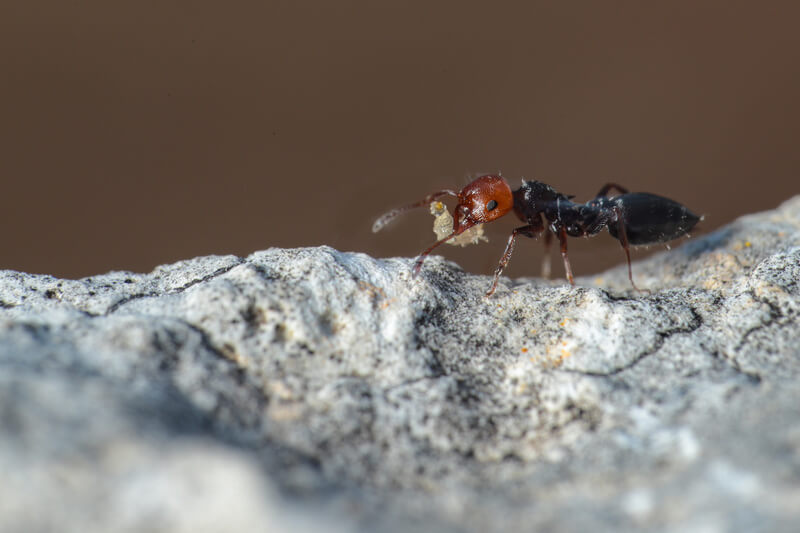

By raising the temperature of the nest the metabolism of the brood will accelerate, reducing the time needed for the ant to fully develop into adults.
Crematogaster scutellaris are an extremely fast-developing species! If provided with the right temperature the colony starts to grow exponentially, and can reach a thousand workers in less than 2 years!
Humidity
50%
60%
When it comes to humidity levels, Crematogaster scutellaris doesn’t have extreme demands. They like a range of moisture levels that go from 50% to 60%, the typical Mediterranean climate.
In the wild they inhabit dead trees, some of which are completely dry. If the climate becomes extremely dry they, like many other ant species, have the ability to raise the humidity level of the nest by watering it.
Food
Like almost every ant species, Crematogaster scutellaris needs some dose of sugar for the workers and some protein for the queen and the brood.
As the sugar source, you can give them sugar water and some drops of honey. They really love honey! If you wanna go for the best possible sugar source, the Ant Antics sugar snaps are the product for you!
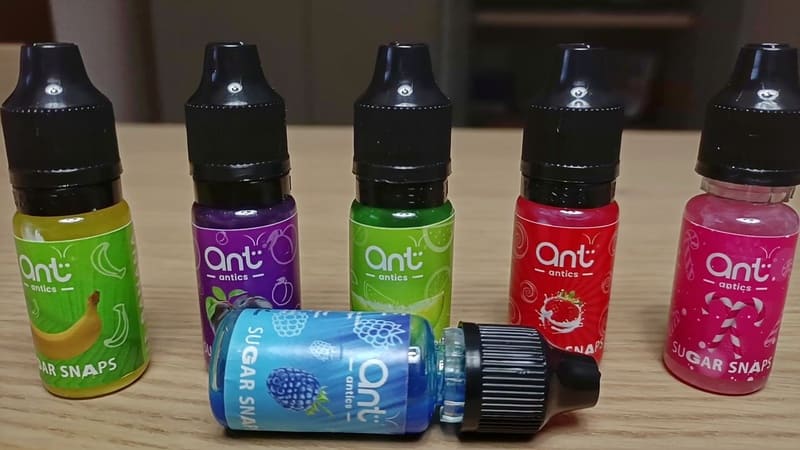

With these fantastic colorful little bottles you can give your ants a very high-quality source of sugar, fueling their all-day-long working routine! With the sugar snaps you can be sure about one thing: your ants are going to love them!
Given their fast growth rate, they also need a lot of protein!
Proteins are the building blocks of every animal body, and are essential for the development of the ants. The queen needs protein for the production of the eggs, which will grow into larvae and then into pupae.
During the life cycle of the ant from egg to adult worker, the brood needs a lot of protein to successfully complete the various stage changes. Once the body of the ant is fully formed, the need for protein fades out, and the need for sugar takes its place.
As the source of protein, you can give them almost every type of insect. In the wild they love crickets, mealworms, fruit flies and spiders.
If you’re reading this guide, there’s a high chance you’re just starting out, and that you’ve just caught your first Crematogaster scutellaris queen ant. If that’s the case, you don’t have to worry too much about feeding at this stage.
That’s because Crematogaster scutellaris is a fully claustral species, which means that the queen won’t need to eat for at least a month, until she has her first workers.
She especially doesn’t need protein right now, because she can obtain the protein she needs from the decomposition of her wing muscles. However, if you want, you can give her a little drop of honey. That would give her the right amount of energy she will need to start her own ant colony!
Hibernation
8°C
12°C
Crematogaster scutellaris need hibernation. They hibernate through the winter, from around late October to early March. They need at least a couple of months of diapause, a biological phase in which the queen doesn’t lay eggs.
This phase is very important for the health of the queen, and it’s the only time in the whole year when she can peacefully take some rest.
For this species, the ideal temperature for hibernation is around 10 degrees Celsius. I would not suggest going a lot lower than this, because in some cases it could create some problems in the long-term growth of the colony.
If you haven’t any available refrigerator you can put the colony in the basement or in the garage, where the temperature is not too low and not too high.
If you’re a beginner ant keeper and this is your first hibernation, I would strongly suggest you check out this other guide! Here I explain in detail every aspect of this complex process called hibernation! What it is, why ants hibernate, and what are the most effective ways to hibernate your beloved ants!
Nest Type
When building or buying the nest for this species, keep in mind that they can also spray formic acid! For this reason, I would suggest using an outworld with a lot of ventilation holes or an easy-to-remove lid.
With large colonies, this could become a real problem. If the outworld doesn’t have adequate ventilation and the ants start to spray formic acid because they feel intimidated, they can harm themselves with the formic acid fumes!
Let’s see what are the best types of nests for this extremely cool Mediterranean ant species!
Wooden Nest
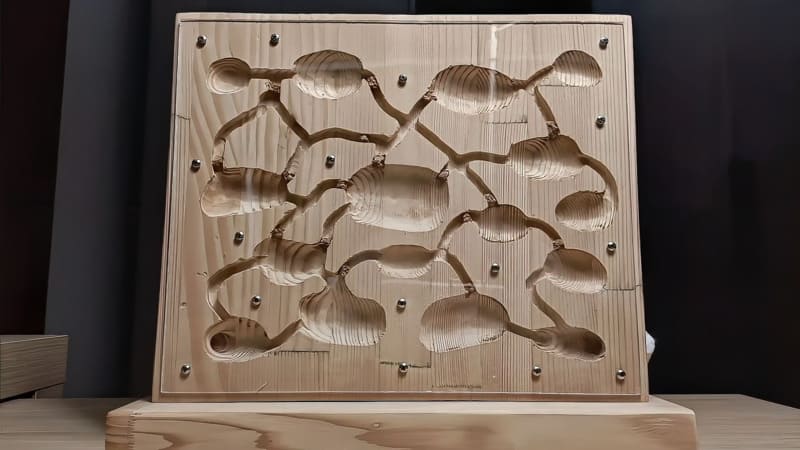

When it comes to choosing a formicarium for Crematogaster scutellaris, the perfect and most obvious choice would be a nest made of wood.
This species really loves this material, and if you choose this type of nest you can be sure that your colony will thrive in it! Wooden nests don’t need to be hydrated, and need little to no maintenance!
Unluckily, there aren’t many companies that make this type of nest, and the ones that make them don’t have a lot of options. On the positive side, making a wooden nest is not that hard!
If the idea of building a wooden nest all by yourself intrigues you, I would suggest you check out this tutorial! This is a detailed step-by-step guide on how to build a wooden nest, from the design of the chambers, all the way to the final touches!
Ytong Nest
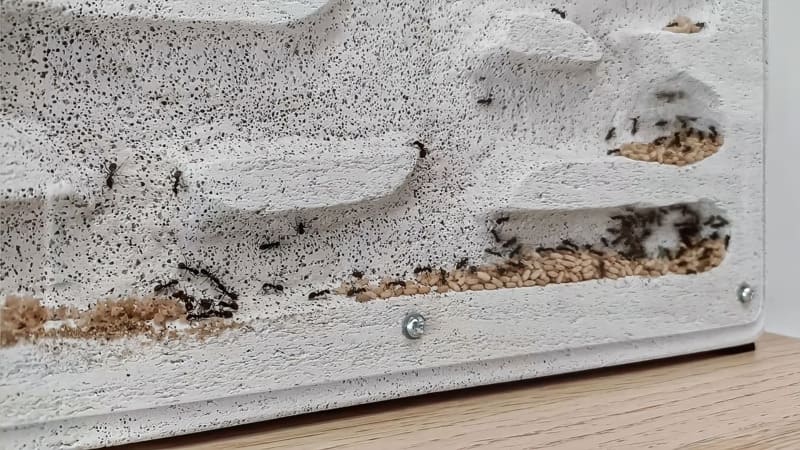

If you can’t find a wooden nest, another option would be a Ytong nest.
Ytong is a particular type of aerated concrete, usually used in construction. It is very popular in ant keeping for its moisture-retention properties, and It’s suitable for housing a colony of this species.
You can easily find this type of nest online. If you instead like D.I.Y. projects or if you don’t wanna spend a lot of money on a nest, this material is very easy to sculpt! You can easily create all the chambers just by using a screwdriver!
Online you can find a lot of tutorials on how to build one of these! Like this one!
Acrylic Nest
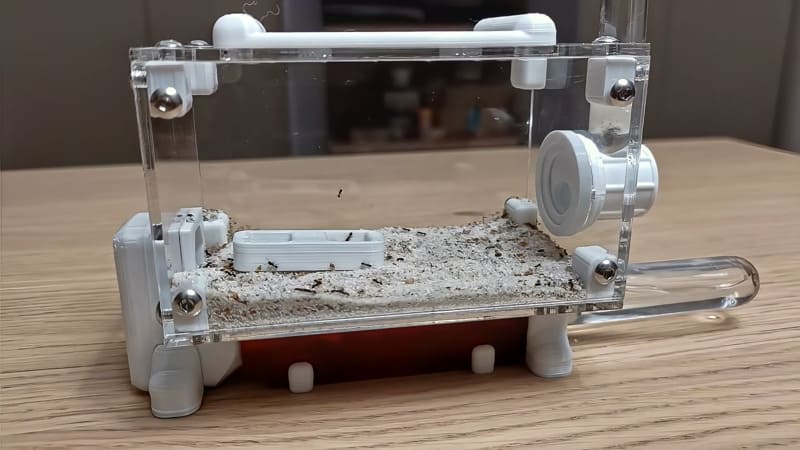

Discount!
Another option for housing a colony of Crematogaster scutellaris is an acrylic nest.
Acrylic nests are perfect for housing almost every species of ants, including the colonies of Crematogaster scutellaris. They are relatively cheap if compared to the other ones, and you can easily find them in almost every ant keeping online shop.
When it comes to choosing which acrylic nest to get, you have plenty of choices. All-in-one nests, modular nests, test tube-based nests… You are spoilt for choice!
If you like the idea of housing your colony inside one of these nests, I would suggest you check out this product review! It’s the review of the extremely cool ant nest in the picture above!
Pictures
I hope you have found this guide helpful!
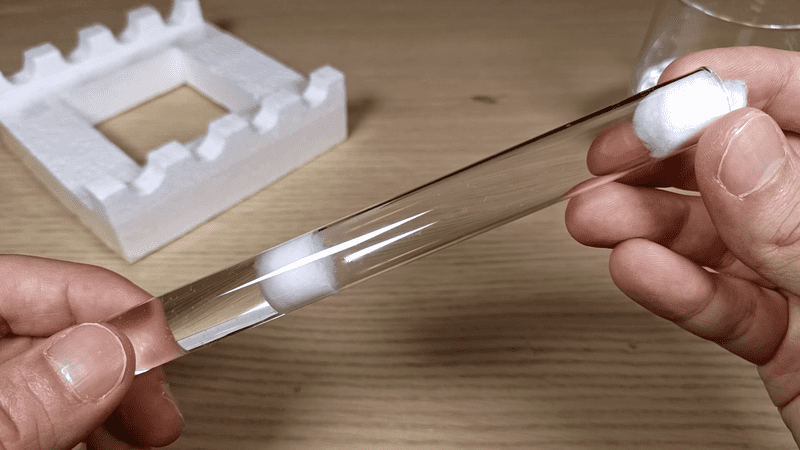

If you just found your queen and wanna know how to create the perfect environment for her, check out this guide on how to make a test tube setup! This is the perfect way to start your ant colony!
Real-world impact!
Thanks to the BRUMA Ants Plus subscribers and our partner Ecologi we are planting lots of trees all around the world! Click on the Ecologi logo to see the real-world impact of this amazing community!
Join our Discord!
